Gross income vs. net income for bank business loans (The difference)
Does your business need more capital for inventory, equipment or scaling up your marketing growth strategy? Are you in the […]
Read More »Become a successful marketing consultant: Learn more
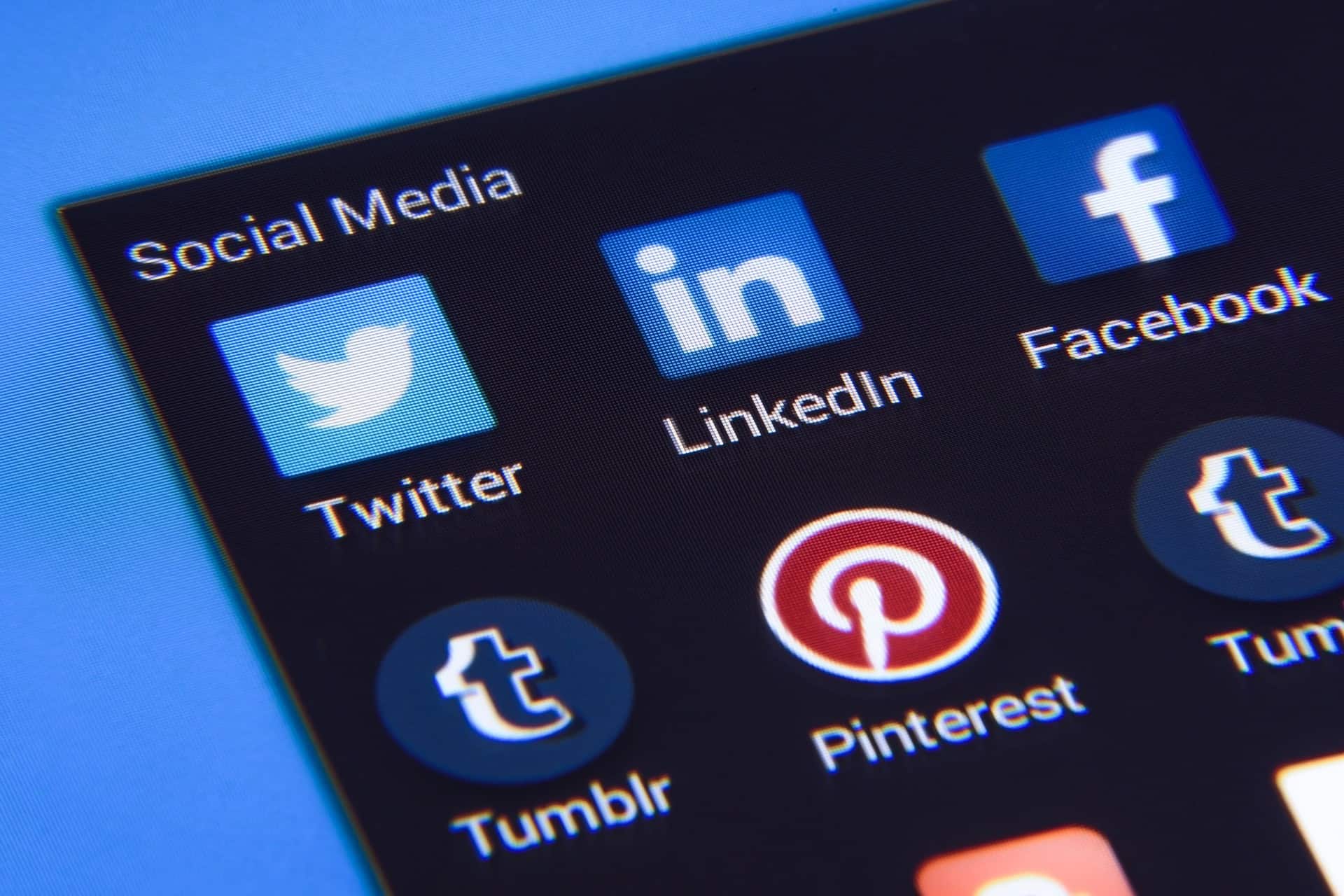
They also say 65 million decision-makers use LinkedIn across 57 million companies.
LinkedIn also says they give marketers, like you and I, access to their decision-makers, and a way to deliver targeted messages, focusing on customer intent, behavior, engagement and interests.
While its not exactly clear how this data was created, LinkedIn reports they were named the #1 platform for B2B lead generation.
Again, not exactly sure who is giving them this title, but we’ll let it slide.
LinkedIn also says that marketers see up to 2x higher conversion rates on LinkedIn. A novice marketer may see this as a huge benefit of giving LinkedIn their advertising dollars, but again, we are not exactly sure who is saying this, and what a “2x higher conversion rate” really means and what this is compared to. We’ll explore this metric shortly and also in Part 2 of this article when we discuss the Case Study results from this campaign..
Depending upon your goals, LinkedIn may still present a good place to test your offer.
So let’s dig a little deeper and walk through some examples of getting your message in front of the best audiences LinkedIn has to offer.
There is no doubt LinkedIn is a solid, trusted niche within the business environment.
And it has never been easier to connect with fellow business people from virtually every industry across the globe, thanks to LinkedIn.
But when asked if a singular place to advertise represents a good fit, any marketer worth their weight will respond with,
“What is the goal?”
And that is exactly where we will start with this helpful tutorial as we walk down the path of setting up an ad campaign on LinkedIn.
+++++++
Is LinkedIn good for advertising?
Whether LinkedIn is good for advertising depends upon the profile of your customer, your business, and your offer. LinkedIn has 65 million decision makers and 57 million businesses in their database. If your business relies upon a B2B function, then LinkedIn may represent a good place to advertise your message in front of potential customers.
+++++++
So, first, let’s get a general high level feel for LinkedIn using Google trends:
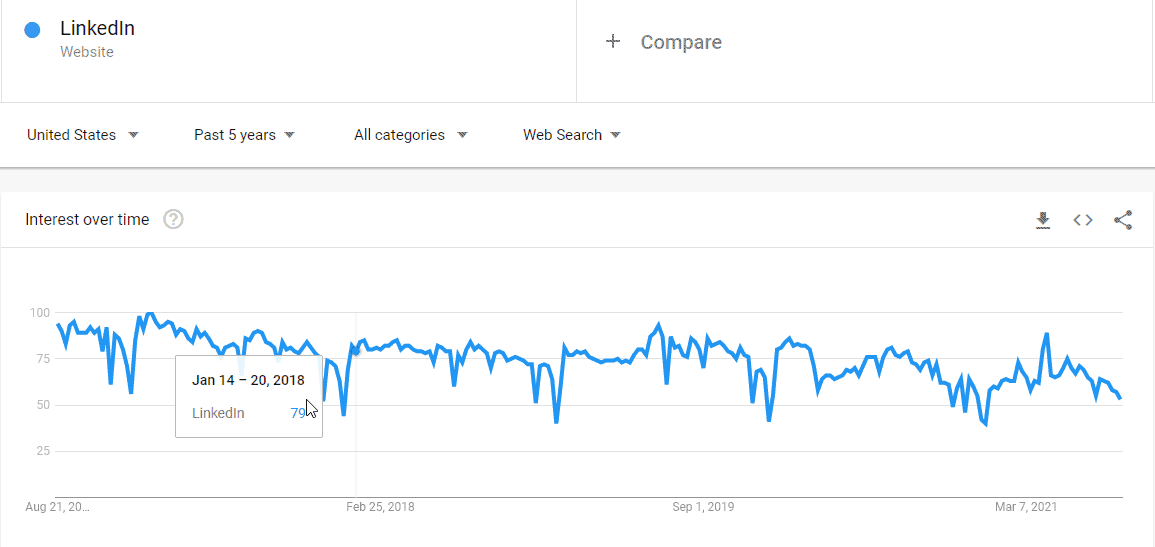
Generally, for the past 5 years, LinkedIn website traffic has been declining, but it still offers a reliable, seasonal usage. The trend of traffic volume has declined from a peak of 100 in popularity in2016 to an approximate value of 55 today.
Is this an accurate decline in popularity? Are there other forces that may support a general decline? A SWOT analysis and a Porter’s 5 Forces analysis should be done annually as it relates to your company and industry. But you could also simply ask others in your office, your network, suppliers or colleagues if their LinkedIn usage has declined. You might find a common theme that their use has decreased, just as we found.
These factors not necessarily an indicator of advertising effectiveness with LinkedIn in itself, just a 30,000-foot high level of the general landscape.
Onward.
Even with a decrease in usage, we do feel that LinkedIn represents a potential source of B2B customers for many offers. And if the goal is to gain business accounts, LinkedIn is a worthy place to test, budget permitting.
Would one go here for retail customers?
It’s possible.
It depends on the type and scope of service.
Does business need plumbers, auto repair, health food, massage, fitness, medical, acupuncture, dry cleaning on and on?
Of course.
After all, business to business (B2B) is still doing business with a real live person, who makes emotional decisions. It’s possible that in business, one might need more logical reasons to justify their emotional purchase. But we can discuss that at another time.
Our goal here is to generate lead flow, with the goal of making a sale to another business customer.
But first, it’s important that we have some goals and baselines set.
Our first goal is to know where we are starting from.
Advertising on LinkedIn is a type of advertising that falls under our Website Marketing and Online Advertising category. Please review that if you haven't already.
For example, let’s assume you currently generate 1000 visitors per month from your Google Ads campaign at a cost of $1000.
Also assume you get 20 leads per month from Google Ads for a cost per lead (CPL) of $50.
With this important info, we will then compare LinkedIn traffic and CPL against this, in hopes that we can gain a lower CPL.
LinkedIn has many ways to advertise your message to their users.
LinkedIn offers Sponsored Content, Message Ads, Dynamic Ads, and Text Ads.
We will be focusing on conversions and doing a cost per click ad focused on driving website traffic to a landing page.
But more about this strategy in a moment.
+++++++
How do I write a LinkedIn ad?
LinkedIn offers multiple ways to advertise. All LinkedIn advertisers use the Campaign Manager, which is LinkedIn’s advertising platform. Primarily for the business community, ads generally should follow a B2B format. The best ads provide a simple, clear message and answer the most important question all recipients ask first, “What's in it for me and my company?”.
+++++++
Regardless of the options you choose, you will need to build your linkedIn ‘Campaign Manager’. It’s really no different than other campaign managers, but unique to the LinkedIn platform with their own user interface. In fact, LinkedIn is somewhat similar to the Facebook advertising platform.
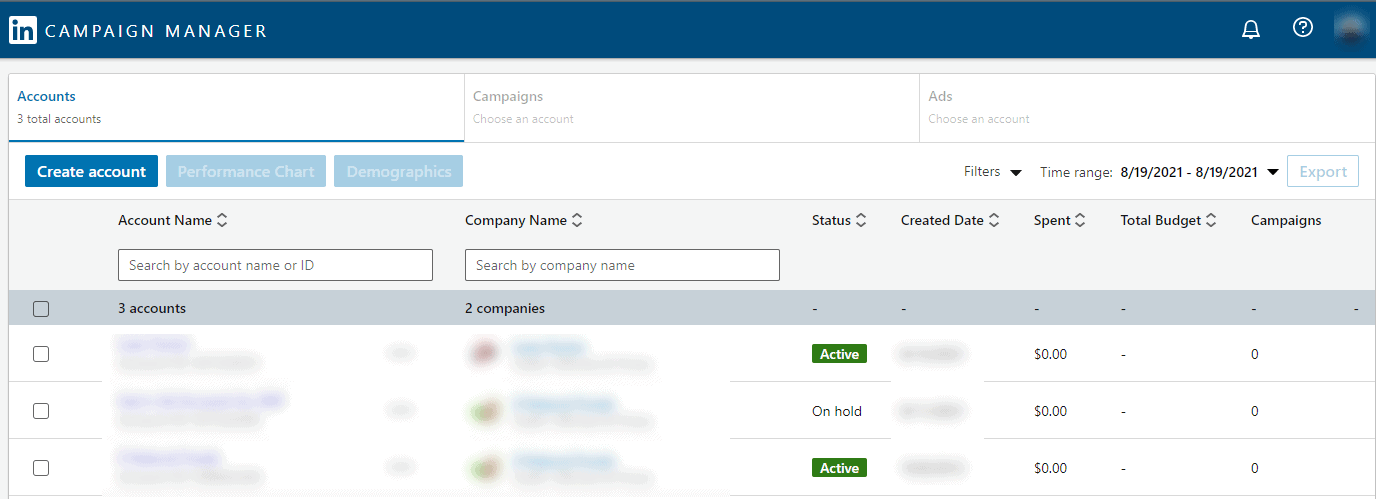
From your Campaign Manager you can set up:
The development of your LinkedIn ad(s) really starts at your Campaign level (#3 above). Your Campaign level is where you set your:
Tracking is one of the most important things you can do, and this really is the first step.
To set up your tracking, navigate to the Campaign Groups tab and click on the Account Assets.
The top drop down will be “Insight Tag”. This is a piece of code that needs to be put on every page of your website. Any web developer can easily do this, or you can do it yourself. One very easy option is to use Google Tag Manager if you use this.
This code will give you fantastic reporting features and will let you build your retargeting campaigns. More about retargeting in another tutorial.
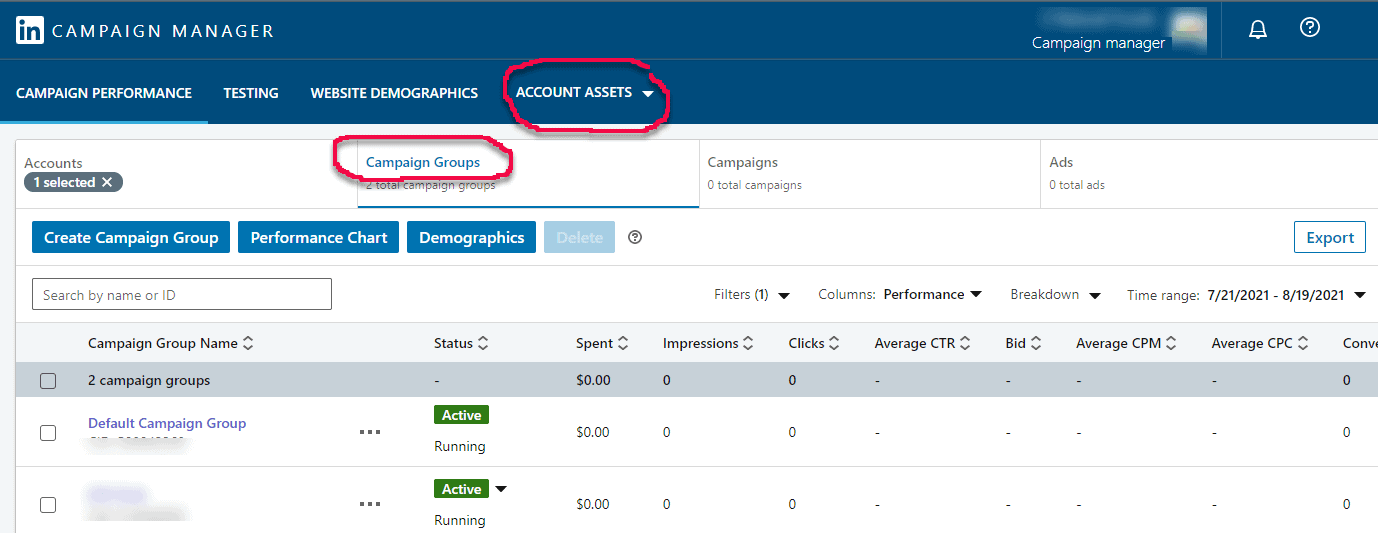
Once your Insight Tag is installed properly, it will list the site and when it last received a signal.
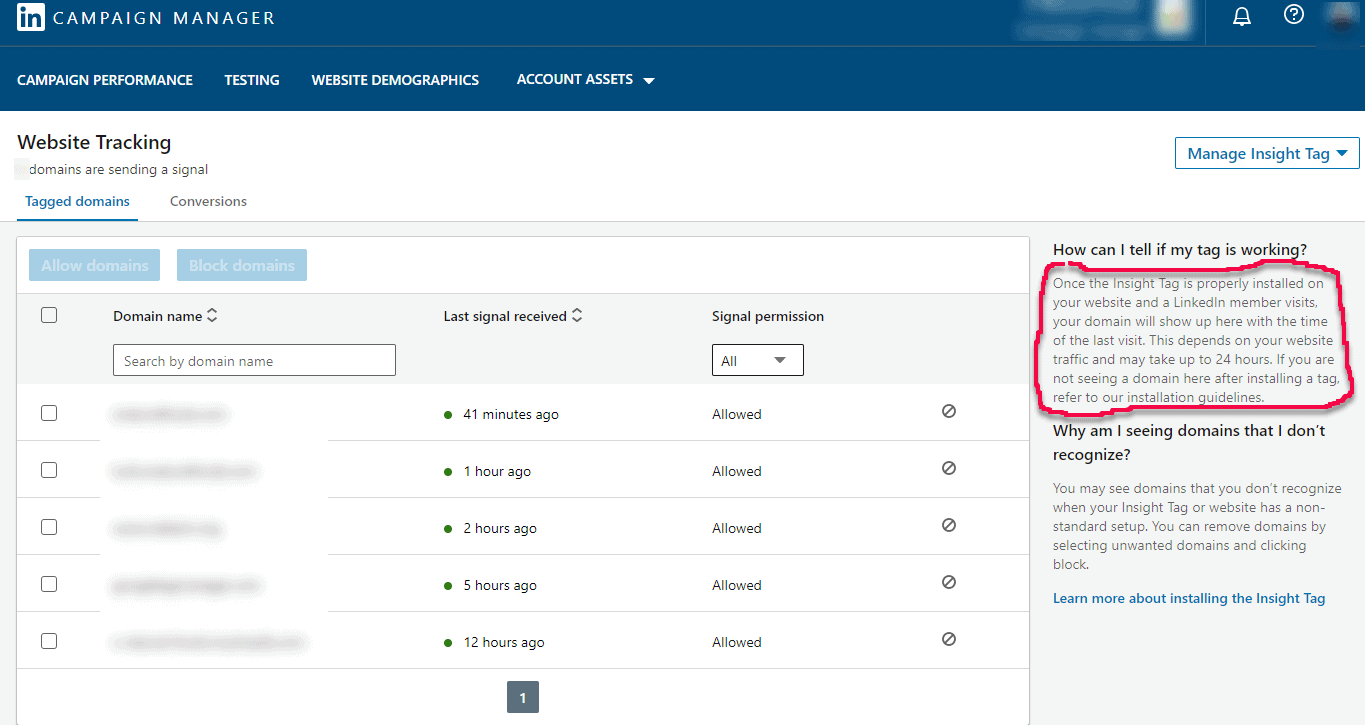
Ok, onward to develop some ads.
Whether you are advertising on LinkedIn or some other online advertising platform, there are some basic strategies that are most important.
That is, if you are focused on getting the best return from your advertising spend.
Getting the best result is all we focus on.
And this principle is known as direct response advertising. As opposed to brand advertising.
But get this, with direct response advertising you get the added benefit of building your brand as a result. If you focus on brand advertising, you won’t be optimizing your return on advertising spend.
Examples of brand advertising? Awareness campaigns. Most video views. Or other campaigns that do not have a clear, benefit-rich call to action.
This is a critically important distinction.
Onward.
98% of the time there’s really only 3 LinkedIn campaigns we would ever spend money on, they are:
Here’s why:
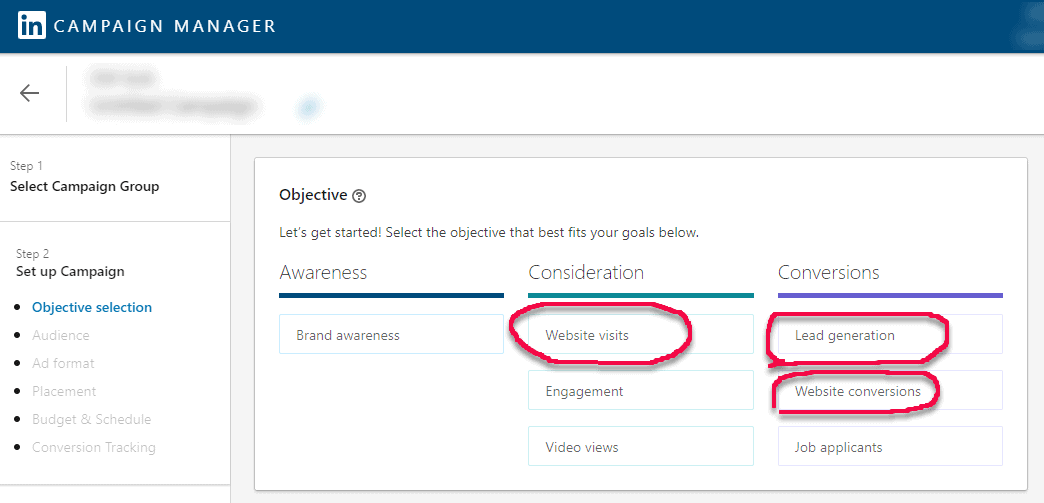
First, we will choose website visits for this first campaign group because we have several tested landing pages that are proven and we want to measure LinkedIn traffic against other traffic sources.
Second and similar to Facebook advertising, LinkedIn offers a Lead Generation option, where they collect the leads and put them into a .CSV for you to download and enter into your system. We are not doing that because these types of leads tend to be of lower quality for our offering, possibly because LinkedIn makes it so easy and convenient for their users to fill out the form.
This isn’t a bad strategy if you simply want to get your systems set up and implement your auto email campaigns, and have the budget for it. But it’s not something we are going to do this time.
Third, is website conversions. This is an excellent option. This is essentially LinkedIn’s Artificial Intelligence and their vast database systems working for us. After all, LinkedIn has a far better idea of whom among their users will most likely fill out a form, then we do.
So, once one of these three options are chosen, now its time to write the advertising copy.
Writing good ad copy on Linked isn’t any different than good ad copy on any other platform.
Yes, some will say, “but LinkedIn is B2B.”
Ok.
But any good advertising copywriter writes to a human.
One on one.
A good ad writer, whether on LinkedIn or not, does not write as though they are speaking to 10,000 people. They don’t say, “hey guys” or “dear friends”. Good advertising writers write as if they are speaking across the table one on one.
And so should you.
So in reality it is B2H copy, or ‘business to human’.
And regardless of your offer, good copy on LinkedIn is literally you writing to an old friend while presenting a compelling reason that appeals to this person so they want to take action right now.
Don’t over complicate things.
Keep it simple and write normal. Do it in clear, simple, compelling language that answers one question:
“What’s in it for me?”
Here’s a great place to start for your LinkedIn advertising copy…
Start with your most productive Google Ad
Then adjust the ad as needed according to the LinkedIn characters requirement.
If you don’t have any Google Ads to draw from, do this:
Or best yet, do both.
It really is this simple. If it makes sense for your model and you have the budget to test additional platforms, get started and test LinkedIn as cheaply as you can so you can build some data to support your next decision.
After all, what if it works?
You’d certainly wish you’d got started earlier.
See you in the Part 2 where we go over the results from a recent LinkedIn test campaign.